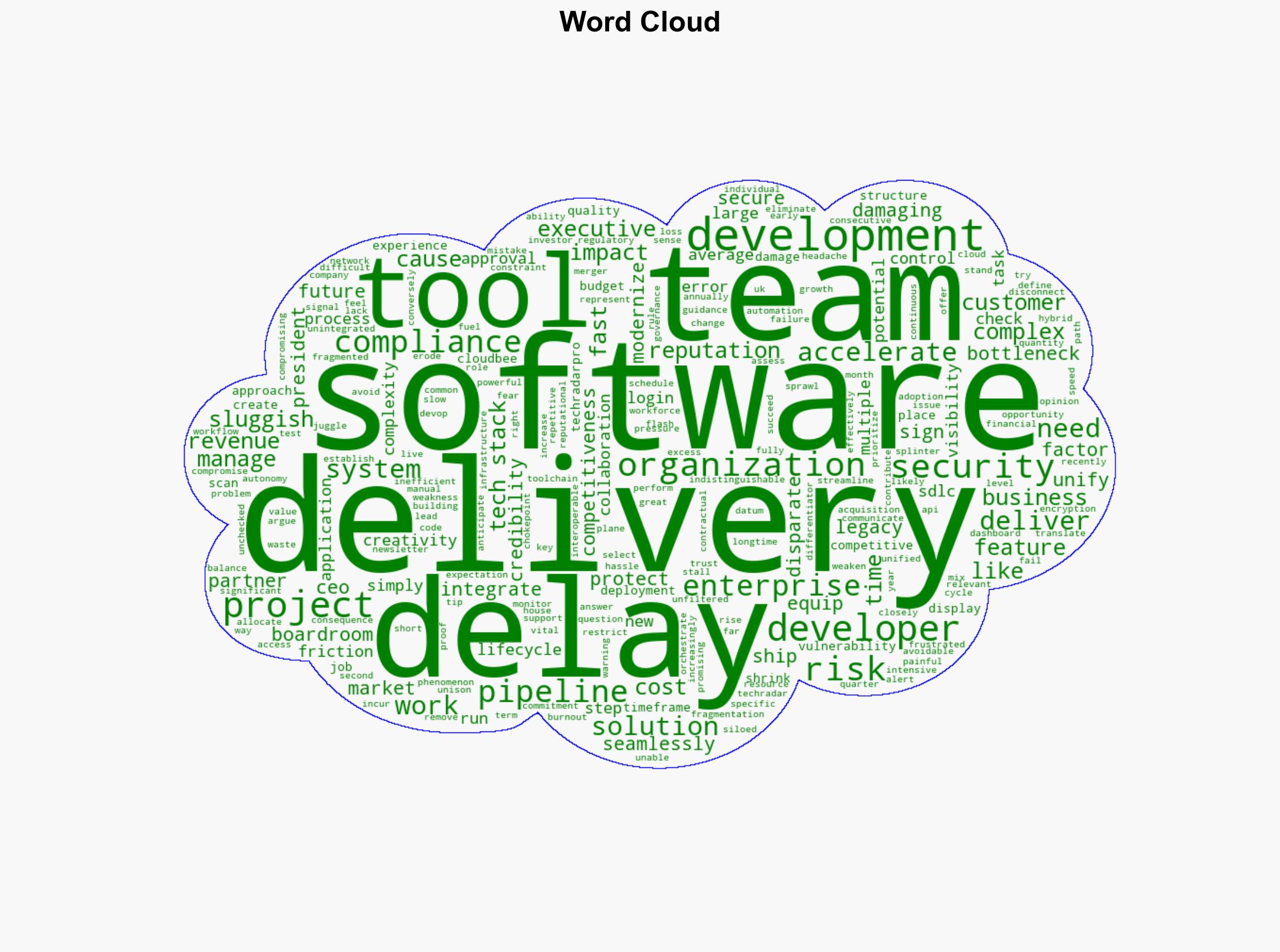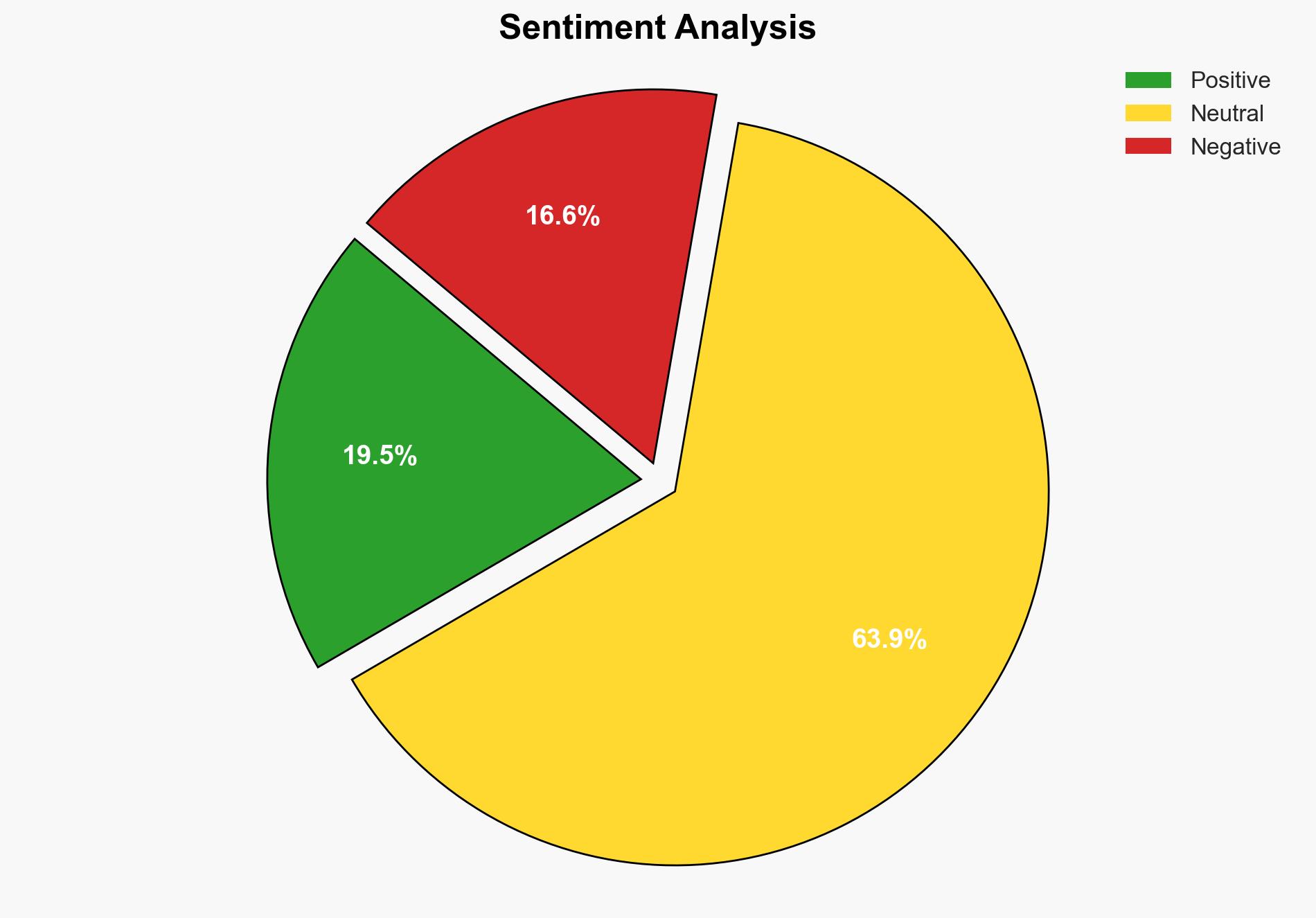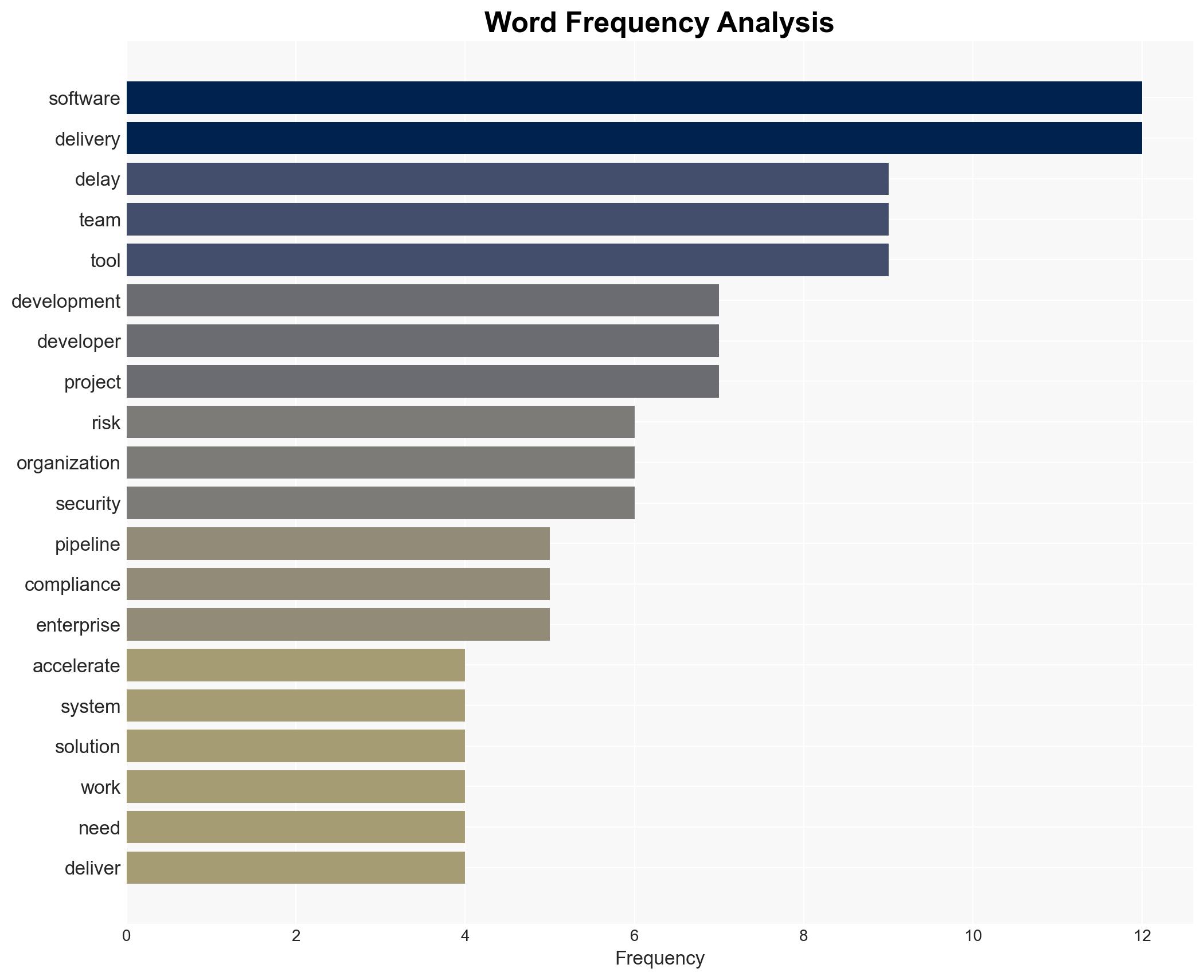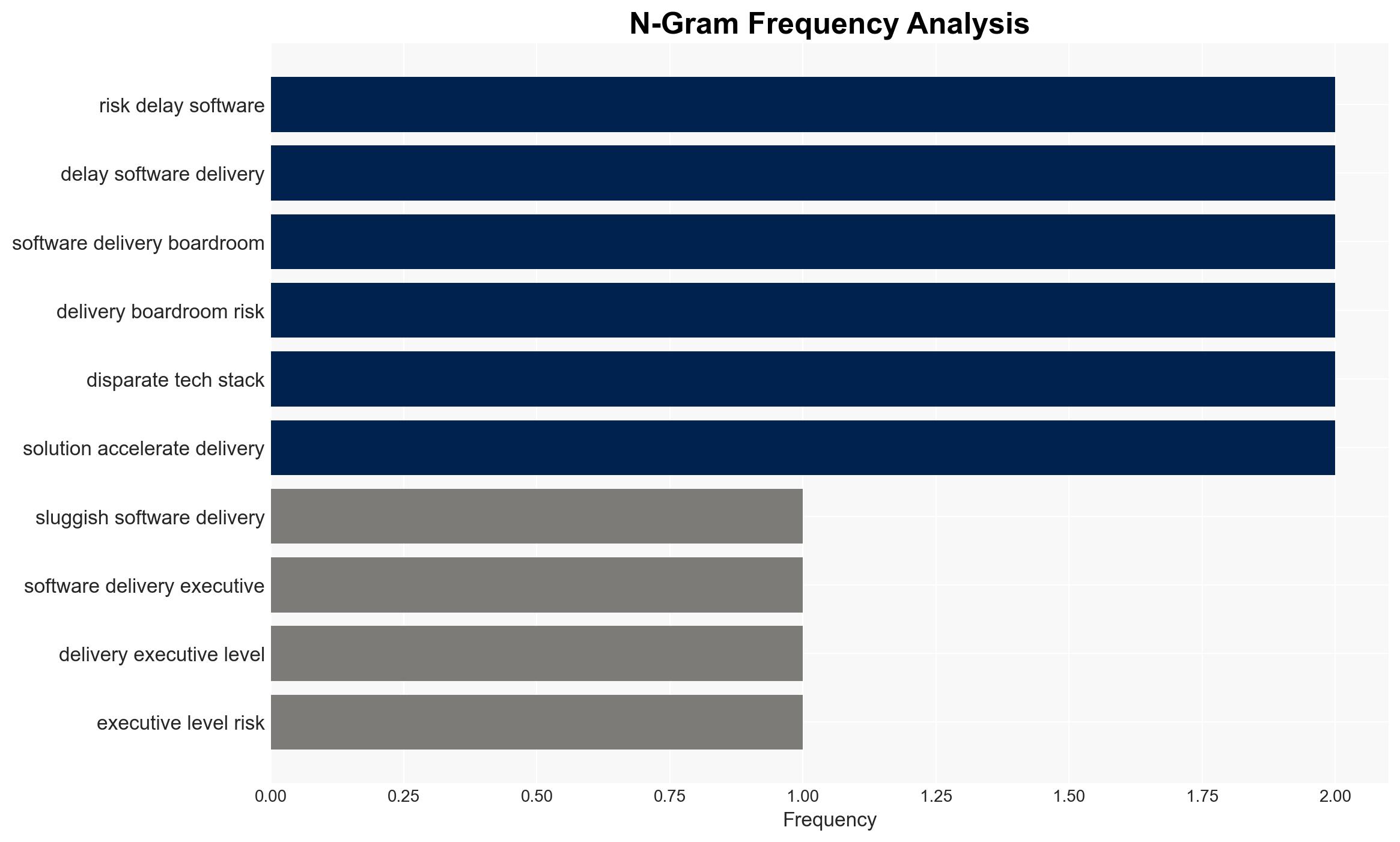Sluggish software delivery is an executive-level risk – TechRadar
Published on: 2025-11-15
AI-powered OSINT brief from verified open sources. Automated NLP signal extraction with human verification. See our Methodology and Why WorldWideWatchers.
Intelligence Report: Sluggish Software Delivery as an Executive-Level Risk
1. BLUF (Bottom Line Up Front)
The most supported hypothesis is that sluggish software delivery is primarily due to fragmented toolchains and inefficient processes, posing significant risks to revenue, reputation, and competitiveness. Confidence Level: Moderate. Recommended action includes streamlining the software delivery pipeline and enhancing tool integration to mitigate these risks.
2. Competing Hypotheses
Hypothesis 1: The primary cause of sluggish software delivery is fragmented toolchains and inefficient processes within the software development lifecycle (SDLC). This fragmentation leads to bottlenecks, reduced visibility, and increased errors, ultimately impacting revenue and reputation.
Hypothesis 2: Sluggish software delivery is primarily due to external factors such as market expectations, regulatory compliance pressures, and resource constraints, which are beyond the immediate control of the organization.
Hypothesis 1 is more likely given the evidence of tool sprawl and process inefficiencies highlighted in the source text. The internal factors are more actionable and directly influence the SDLC, whereas external factors, while impactful, are less controllable and thus secondary in this context.
3. Key Assumptions and Red Flags
Assumptions: It is assumed that the organization has the capability to streamline processes and integrate tools effectively. There is also an assumption that the internal processes are the primary cause of delays, rather than external factors.
Red Flags: Potential bias in underestimating the impact of external factors such as regulatory changes and market dynamics. There is also a risk of deception if internal reports downplay process inefficiencies to avoid accountability.
4. Implications and Strategic Risks
The primary implication of sluggish software delivery is the erosion of competitive advantage, leading to potential financial losses and reputational damage. This can escalate into broader economic risks if the organization fails to meet market demands, potentially resulting in loss of investor confidence and market share. Cybersecurity risks may also increase if security processes are compromised to accelerate delivery.
5. Recommendations and Outlook
- Actionable Steps: Conduct a comprehensive audit of the current SDLC to identify bottlenecks and inefficiencies. Invest in unified toolchains to enhance integration and streamline processes. Implement continuous training for development teams to adapt to new tools and processes.
- Best-case Scenario: Successful integration and process optimization lead to improved delivery times, enhanced reputation, and increased market share.
- Worst-case Scenario: Failure to address internal inefficiencies results in continued delays, financial losses, and potential regulatory penalties.
- Most-likely Scenario: Partial improvements in delivery speed and process efficiency, with ongoing challenges in adapting to external pressures.
6. Key Individuals and Entities
CloudBees (President/CEO) – As a key player in providing solutions for software delivery, their insights and products are crucial in addressing the highlighted issues.
7. Thematic Tags
Cybersecurity, Software Development, Risk Management, Process Optimization
Structured Analytic Techniques Applied
- Adversarial Threat Simulation: Model and simulate actions of cyber adversaries to anticipate vulnerabilities and improve resilience.
- Indicators Development: Detect and monitor behavioral or technical anomalies across systems for early threat detection.
- Bayesian Scenario Modeling: Quantify uncertainty and predict cyberattack pathways using probabilistic inference.
- Network Influence Mapping: Map influence relationships to assess actor impact.
Explore more:
Cybersecurity Briefs ·
Daily Summary ·
Support us
·





